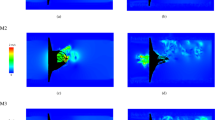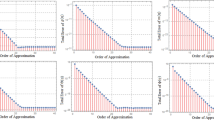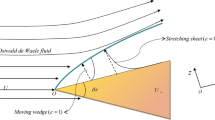Abstract
THE exploitation of trapped vortices and flow deceleration by the aortic valve to ensure maximum efficiency and to make possible laminar flow1,2 suggests a similar mechanism for the atrio-ventricular valves. These are the inlet valves to the two ventricles, the mitral valve on the left side and the tricuspid valve on the right.
This is a preview of subscription content, access via your institution
Access options
Subscribe to this journal
Receive 51 print issues and online access
$199.00 per year
only $3.90 per issue
Buy this article
- Purchase on Springer Link
- Instant access to full article PDF
Prices may be subject to local taxes which are calculated during checkout
Similar content being viewed by others
References
Bellhouse, B. J., and Bellhouse, F. H., Nature, 217, 86 (1968).
Bellhouse, B. J., and Talbot, L., J. Fluid Mech., 35, part 4, 721 (1969).
Rushmer, R. F., Cardiovascular Dynamics (Saunders, 1961).
Author information
Authors and Affiliations
Rights and permissions
About this article
Cite this article
BELLHOUSE, B., BELLHOUSE, F. Fluid Mechanics of the Mitral Valve. Nature 224, 615–616 (1969). https://doi.org/10.1038/224615a0
Received:
Issue Date:
DOI: https://doi.org/10.1038/224615a0
This article is cited by
-
Intra-Cardiac Flow from Geometry Prescribed Computational Fluid Dynamics: Comparison with Ultrasound Vector Flow Imaging
Cardiovascular Engineering and Technology (2023)
-
Emerging Trends in Heart Valve Engineering: Part IV. Computational Modeling and Experimental Studies
Annals of Biomedical Engineering (2015)
-
Computational modeling and validation of intraventricular flow in a simple model of the left ventricle
Theoretical and Computational Fluid Dynamics (2014)
-
Prolonged vortex formation during the ejection period in the left ventricle with low ejection fraction: a study by vector flow mapping
Journal of Medical Ultrasonics (2014)
-
Flow control in our vessels: vascular valves make sure there is no way back
Cellular and Molecular Life Sciences (2013)
Comments
By submitting a comment you agree to abide by our Terms and Community Guidelines. If you find something abusive or that does not comply with our terms or guidelines please flag it as inappropriate.



